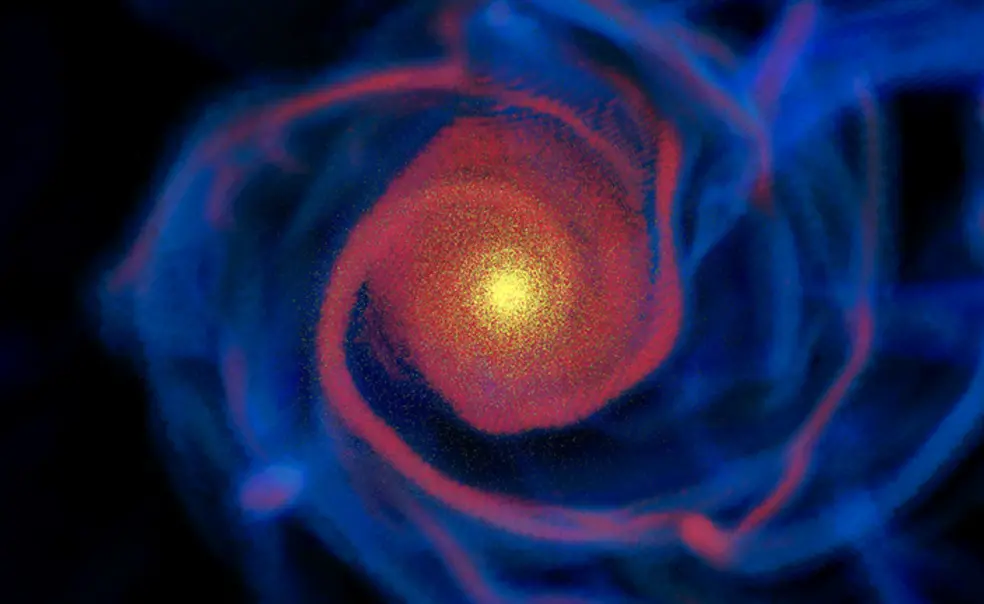Astronomer Oleg Gnedin *99 Models Galaxies and Stars

In 2004, Oleg Gnedin was part of a team that accurately modeled the energy transfer within cosmic gas, developing the first widely accepted solution to the “missing satellites” problem in large galaxies. The term refers to the absence of dark matter halos that should surround some galaxies but are not currently observable.
He went on to become a professor in the University of Michigan’s Department of Astronomy, where he has taught since 2006. There he has continued his work with other researchers to construct mathematical models to address how galaxies and star clusters form and evolve over millions of millennia — processes that are influenced by gravity, cosmic gas, and radiation. To demonstrate these changes, the mathematical models he has developed in collaboration with colleagues have advanced to yield 3D simulations.
His team analyzes a particular area of the sky to generate 3D structures that display changes over time. Since the areas being modeled are made up almost entirely of empty space (since gravity forces structures to collapse), astronomers concentrate their focus on the low density of stars or “resolution elements.” “The tiniest fraction of space is taken up by the densest objects that form stars and galaxies,” Gnedin said. “The totality is known as the cosmic web.”
Achieving a visual representation is exceedingly difficult, he says. But since much of human learning is done visually, representing these concepts graphically has the potential to be more instructive than reading words or equations.
“But how to visualize it makes a big difference,” says Gnedin. He points out that the same object viewed from various angles under various conditions can appear quite different. The limited resolution of a telescope can also affect an image’s accuracy. To circumvent this problem, his team has produced a series of computer-generated renderings of objects being studied.
In addition to conducting research, Gnedin teaches an undergraduate course on the search for extraterrestrial life. It begins by defining extraterrestrial life, then examines its potential evolution through the disciplines of astrobiology and geology. It also surveys the ongoing efforts to search for and potentially contact such life. Gnedin presented on the topic at a November dinner hosted by the Princeton Club of Michigan.
As more sophisticated telescopes come online, the images they yield can be compared to their computer-generated counterparts, like those created by Gnedin, and compared for accuracy. Gnedin is eagerly anticipating data likely to come from the new James Webb Space Telescope, which was in development for more than two decades and launched on Christmas Day.














No responses yet